In the exponentially-growing streaming industry, choosing the right software has become more crucial than ever. The success of any OTT venture hinges on aligning with market trends, user preferences, and business objectives. A market-driven OTT software ensures that your platform remains not only competitive but also adaptable to the changing dynamics of the streaming industry.
User experience is at the forefront of a successful OTT platform, and the right software plays a pivotal role in delivering a seamless and engaging interface. From intuitive navigation to advanced analytics that provide insights into user behavior, the chosen software significantly influences how viewers interact with your content.
Monetization strategies are diverse in the OTT realm, ranging from subscription models to pay-per-view and advertising-driven approaches. The right software should offer flexibility in implementing these models, allowing you to tailor your monetization strategy to the specific needs of your content and target audience.
Technological advancements are constant, and your chosen OTT software should not only keep up but also anticipate future trends. The ability to adapt to emerging technologies ensures that your platform remains relevant and can capitalize on new features and functionalities that enhance the overall streaming experience.
But there’s more. As you explore the plethora of options available, keep in mind the market-driven approach — one that aligns with current trends, anticipates future developments, and ultimately contributes to the success of your OTT venture. And in this blog, we will guide you through how to choose a market-driven OTT software in 2025. So, let’s get started!
The Importance of selecting a market-driven OTT software
1. Meeting User Expectations
At the heart of any successful OTT platform is user satisfaction. Market-driven OTT software is tailored to meet and exceed user expectations, ensuring a seamless and enjoyable streaming experience.
This encompasses factors such as intuitive interfaces, personalized recommendations, and responsive playback, all of which contribute to heightened user engagement. By selecting software that resonates with the preferences of your target audience, you not only enhance viewer satisfaction but also foster brand loyalty in an increasingly competitive market.
2. Adapting to Market Trends
The OTT landscape is characterized by rapid technological advancements and ever-evolving consumer behaviors. Market-driven software is designed to adapt to these dynamic shifts, ensuring your platform remains relevant and competitive.
Whether it’s the integration of augmented reality (AR), virtual reality (VR), or the implementation of interactive features, choosing software that stays ahead of market trends positions your platform as a trendsetter rather than a follower. This adaptability is crucial for sustaining long-term success and capturing emerging opportunities in the fast-paced world of OTT streaming.
3. Diverse Monetization Models
Monetization lies at the core of any OTT business strategy, and market-driven software recognizes the need for flexibility in revenue generation. Whether it’s subscription-based models (SVOD), pay-per-view (TVOD), advertising-driven approaches (AVOD), or a combination thereof, the right software provides a comprehensive suite of monetization options.
This adaptability empowers businesses to tailor their revenue strategies to the unique content they offer and the preferences of their target audience, maximizing the platform’s revenue potential.
4. Technological Advancements
Market-driven OTT software embraces technological advancements to enhance the overall streaming experience. From high-definition video quality to low-latency streaming, the chosen software should leverage cutting-edge technologies to ensure a superior viewing experience.
This includes efficient content delivery networks (CDNs), advanced video codecs, and adaptive bitrate streaming to accommodate varying internet speeds. By prioritizing technological excellence, your OTT platform can provide a seamless, immersive, and reliable streaming experience, setting it apart in a crowded market.
5. Financial Viability
While the technical capabilities of OTT software are crucial, financial considerations are equally important. Market-driven software strikes a balance between performance and cost-effectiveness.
Opting for a solution that offers robust features without incurring exorbitant expenses is essential for the financial viability of your streaming venture. The right software minimizes operational costs, avoids unnecessary overheads, and ensures that your investment yields a substantial return. This financial prudence is a key aspect of selecting market-driven OTT software that contributes to the sustainable growth of your streaming platform.
6. Competitive Edge
The OTT market is saturated with a myriad of platforms vying for viewer attention. Market-driven OTT software equips your platform with features and capabilities that provide a competitive edge. Whether it’s through unique content recommendations, interactive user interfaces, or innovative engagement tools, the right software positions your platform as a standout player in a crowded field.
This differentiation is essential for attracting and retaining audiences in a highly competitive environment, contributing to the overall success and longevity of your OTT streaming service.
How To Choose the Best Market-Driven OTT Software in 2024?
1. Market Research: Understanding the OTT Industry
Before diving into the selection process, conducting thorough market research is essential. Stay abreast of the latest trends, technological advancements, and emerging players in the OTT industry. Identify successful OTT platforms and analyze their strategies, user experiences, and monetization models. Understand the challenges and opportunities within the market, keeping an eye on regulatory changes, content licensing trends, and consumer behaviors.
Market research also involves assessing the competitive landscape. Identify your potential competitors, understand their strengths and weaknesses, and pinpoint the unique value propositions that set them apart. Analyzing competitor strategies provides valuable insights into market demands and expectations, helping you shape your OTT platform accordingly.
Additionally, consider the global market trends influencing the OTT industry. Factors such as the rise of interactive content, the integration of augmented reality (AR) and virtual reality (VR), and advancements in content recommendation algorithms should all inform your software selection.
2. Target Audience Analysis: Tailoring Your Platform to User Preferences
Understanding your target audience is a fundamental step in selecting market-driven OTT software. Define your audience demographics, including age, geographic location, interests, and viewing habits. Utilize analytics tools to gather insights into your current audience if applicable, or conduct surveys to collect valuable data.
Assess your audience’s content preferences and expectations. Identify the genres, formats, and interactive features that resonate with them. Consider the devices they use for streaming, whether it’s mobile devices, smart TVs, or gaming consoles. This information will guide the customization and compatibility features you’ll prioritize in your OTT software.
Furthermore, analyze the behaviors of your audience regarding monetization. Understand whether they prefer subscription-based models, pay-per-view options, or ad-supported content. Tailoring your monetization strategy to align with audience preferences is critical for maximizing revenue and ensuring user satisfaction.
3. Features and Capabilities: Aligning with Market Demands
Once armed with insights from market research and target audience analysis, evaluate the features and capabilities offered by different OTT software solutions. Look for a platform that aligns with current market demands and offers the flexibility to adapt to future trends. Key features to consider include:
- User-friendly Interface: An intuitive and engaging interface is crucial for user retention. Evaluate the ease of navigation and the overall user experience to ensure that viewers can seamlessly access and enjoy your content.
- Monetization Models: Choose a platform that supports diverse monetization models, including subscription-based (SVOD), pay-per-view (TVOD), and advertising-driven (AVOD) options. This flexibility allows you to tailor your revenue strategy to your audience’s preferences.
- Scalability: Ensure that the OTT software can scale as your platform grows. Whether you start small and expand or anticipate rapid growth, scalability is vital for accommodating increasing content libraries and user bases.
- Compatibility: Consider the devices and platforms your audience uses for streaming. The selected software should be compatible with a wide range of devices, including smartphones, smart TVs, gaming consoles, and web browsers.
- Content Management: Robust content management tools are essential for organizing, categorizing, and delivering your content efficiently. Evaluate the platform’s ability to handle metadata, automate workflows, and support easy content updates.
- Analytics and Reporting: Comprehensive analytics tools provide valuable insights into viewer behavior, content performance, and overall platform success. Choose a platform that offers advanced analytics to inform your content strategy and business decisions.
- Customization: A market-driven OTT software should allow for extensive customization, from branding elements to user interfaces. This flexibility enables you to tailor the platform to your specific brand identity and meet the preferences of your target audience.
4. Trial Periods and Demos: Hands-On Evaluation
Before making a final decision, take advantage of trial periods and software demos offered by potential OTT software providers. This hands-on experience allows you to assess the user interface, test the functionality of key features, and evaluate the overall performance of the platform.
During this trial period, gather feedback from internal stakeholders and, if possible, select a small group of target audience members to provide input. Their insights can reveal usability issues, preferences, and potential areas for improvement.
5. Budget Considerations: Balancing Cost and Value
While considering the features and capabilities of OTT software, it’s crucial to balance your budget constraints with the value provided. Evaluate the pricing models offered by different providers, considering factors such as setup costs, subscription fees, and revenue-sharing models.
Look for transparent pricing structures that align with your business model and revenue expectations. Some software providers offer scalable pricing that adjusts as your platform grows, providing flexibility to accommodate evolving needs.
6. Ensuring the Right Monetization Models: Maximizing Revenue and Viewer Satisfaction
The monetization strategy adopted by an OTT platform is a key determinant of its success. Selecting the right models ensures a balance between generating revenue and keeping viewers satisfied. Here are some essential monetization models to consider:
- Subscription-Based (SVOD): This model involves users paying a recurring subscription fee for access to a library of content. SVOD is effective for platforms with a diverse range of content, offering viewers the flexibility to explore a wide variety of shows and movies without additional charges.
- Pay-Per-View (TVOD): TVOD allows users to pay for individual pieces of content, providing a more a la carte approach. This model is suitable for platforms with premium or exclusive content that viewers may be willing to pay for on a per-item basis.
- Advertising-Driven (AVOD): AVOD relies on advertising revenue, offering free content to viewers who are willing to endure ads. This model is often used for platforms with a vast user base and a focus on maximizing reach and impressions.
- Freemium Model: A combination of free and premium content, the freemium model provides a basic level of content for free while charging for premium features or exclusive content. This approach caters to a broad audience while incentivizing users to upgrade for additional perks.
Choosing the right mix of these models depends on the nature of your content, target audience, and overarching business goals. Platforms should be agile, allowing for adjustments to the monetization strategy based on market trends, user feedback, and shifts in industry dynamics.
7. User-Friendly Interface: Enhancing Engagement and Retention
A user-friendly interface is one of the key pillars of a successful OTT platform. Regardless of the richness of your content library, a poorly designed interface can hinder user engagement and lead to viewer dissatisfaction. Here’s why prioritizing a user-friendly interface is essential:
- Seamless Navigation: An intuitive interface ensures that viewers can easily navigate through the platform. Clear menus, well-organized categories, and a straightforward layout contribute to a seamless user experience.
- Content Discovery: A user-friendly interface goes beyond easy navigation; it actively promotes content discovery. Effective recommendation algorithms, personalized content suggestions, and curated playlists enhance the user’s journey, encouraging them to explore more content.
- Multi-Device Accessibility: With viewers accessing content across various devices, from smartphones to smart TVs, a user-friendly interface should be consistent and optimized for each platform. This ensures a cohesive experience regardless of the device used.
- Customization Options: Allowing users to personalize their experience fosters a sense of ownership. Customizable profiles, watchlists, and preferences contribute to a more engaging and user-centric interface.
- Efficient Search Functionality: A robust search function is critical for users to find content quickly. Incorporating filters, sorting options, and predictive search features streamlines the content discovery process.
- Accessibility Features: An inclusive user interface considers accessibility features for individuals with diverse needs. Subtitles, audio descriptions, and adjustable font sizes contribute to a platform that is accessible to a broader audience.
- Loading Speed and Performance: The speed at which content loads and the overall performance of the platform directly impact user satisfaction. A user-friendly interface ensures that viewers can access content quickly without interruptions or delays.
Investing in a user-friendly interface is an investment in viewer engagement and retention. A platform that is easy to navigate, promotes content discovery, and caters to the preferences of its users creates a positive and immersive streaming experience.
8. Balancing Monetization and User Experience: A Strategic Approach
Successfully navigating the terrain of OTT streaming involves striking a delicate balance between effective monetization and providing an exceptional user experience. These two elements are interconnected and should be approached strategically to create a sustainable and thriving platform.
- Understanding Viewer Behavior: Analyzing viewer behavior through data analytics is crucial. Insights into what content viewers engage with, how they navigate the platform, and their response to different monetization models inform strategic decisions.
- Personalization: Tailoring the user experience based on viewer preferences contributes to effective monetization. Personalized recommendations, targeted advertisements, and customized content offerings enhance engagement and increase the likelihood of user conversions.
- Transparent Communication: Communicate the value proposition of your chosen monetization models clearly to viewers. Whether it’s the benefits of a subscription, the exclusivity of premium content, or the trade-off for free content with ads, transparent communication fosters trust and reduces user friction.
- Feedback Loops: Establish feedback loops with your audience. Regularly seek user feedback on the interface, content offerings, and monetization strategies. This not only shows a commitment to user satisfaction but also provides valuable insights for continuous improvement.
- Adaptability: The OTT landscape is dynamic, and the ability to adapt to changing market conditions is crucial. Stay attuned to industry trends, emerging technologies, and shifts in viewer behavior to proactively adjust your monetization and user experience strategies.
9. Ease of Development and Integration: Streamlining Platform Creation
A streamlined development process is the backbone of any successful OTT platform. The ease with which developers can build and integrate features directly influences the platform’s time-to-market, agility, and adaptability to evolving industry trends. Here’s why prioritizing ease of development and integration is crucial:
- Accelerated Time-to-Market: In the fast-paced world of OTT streaming, getting to market swiftly is a competitive advantage. Platforms that offer intuitive development tools and pre-built integrations significantly reduce the time and resources required to launch.
- Flexibility in Customization: While pre-built solutions provide speed, the ability to customize the platform is equally vital. Ensuring that developers have the flexibility to tailor the user interface, content management system, and other key components to the brand’s identity and user preferences is integral to creating a unique platform.
- Multi-Device Compatibility: A successful OTT platform caters to users accessing content on various devices. Ensuring that development tools support multi-device compatibility streamlines the creation of applications for smartphones, tablets, smart TVs, and other devices.
- Scalability: The ability of a platform to scale with growing content libraries and user bases is essential. Development frameworks should facilitate scalability, allowing the platform to evolve without compromising performance or user experience.
- Third-Party Integrations: Seamless integration with third-party services and tools is critical for enhancing functionality. Whether integrating payment gateways, social media platforms, or analytics tools, a developer-friendly environment supports these integrations without cumbersome processes.
- API Documentation and Support: Clear and comprehensive API documentation is vital for developers to understand and leverage the platform’s capabilities. Additionally, robust developer support ensures that any challenges or queries can be addressed promptly, minimizing development bottlenecks.
- Adaptability to Industry Standards: Following industry standards and best practices ensures compatibility with a broader ecosystem. Platforms that adhere to these standards facilitate interoperability with other services and technologies, fostering a more interconnected digital landscape.
Prioritizing ease of development and integration is an investment in the platform’s agility, adaptability, and long-term sustainability. A developer-friendly environment empowers teams to bring innovations to market swiftly, respond to emerging trends, and deliver a superior user experience.
10. Analytics and Data: Informed Decision-Making and User-Centric Strategies
Analytics and data capabilities are the eyes and ears of an OTT platform. The insights derived from user behavior, content performance, and platform usage inform strategic decision-making, content curation, and user engagement strategies. Here’s why robust analytics and data capabilities are indispensable:
- Understanding Viewer Behavior: Analytics tools provide granular insights into how viewers interact with the platform. From the content they watch to the features they use, understanding viewer behavior is pivotal for optimizing the user experience and tailoring content recommendations.
- Content Performance Analysis: Evaluating the performance of individual pieces of content is essential for streaming businesses. Analytics help identify high-performing content, user engagement patterns, and areas for content optimization or expansion.
- User Retention Strategies: Analyzing user retention metrics offers valuable insights into what keeps viewers coming back. By understanding factors that contribute to user churn, platforms can implement targeted strategies to enhance user retention, whether through personalized content recommendations, promotional offers, or other engagement tactics.
- Personalization and Recommendation Algorithms: Advanced analytics powers personalized content recommendations. By leveraging machine learning and user data, platforms can offer tailored suggestions, creating a more engaging and satisfying experience for viewers.
- Monetization Strategy Optimization: Analytics play a pivotal role in optimizing monetization strategies. By analyzing user interactions with ads, subscription models, and pay-per-view options, platforms can refine their monetization approach to align with user preferences and maximize revenue.
- Platform Performance Metrics: Monitoring the performance of the platform itself is essential. Metrics such as loading times, buffering rates, and error rates provide insights into the overall user experience, allowing for continuous improvement in platform performance.
- Audience Segmentation: Understanding the diverse preferences of a broad audience requires effective audience segmentation. Analytics tools enable platforms to categorize users based on viewing habits, demographics, and other parameters, facilitating targeted content strategies for different segments.
- Predictive Analytics: Anticipating user behavior and industry trends is made possible through predictive analytics. By analyzing historical data and industry patterns, platforms can make informed decisions about content acquisition, platform enhancements, and future developments.
11. Scalability: The Key to Growth
Scalability is not merely a technical term; it embodies the ability of an OTT platform to grow, adapt, and handle increased demands seamlessly. The significance of scalability lies in its capacity to cater to expanding content libraries, growing user bases, and evolving technological landscapes. Here’s why scalability is a linchpin for success:
- Accommodating Content Growth: As content libraries expand with new releases, acquisitions, and partnerships, a scalable platform effortlessly integrates additional content without compromising performance. This adaptability ensures that platforms can cater to diverse viewer preferences and stay competitive in a content-rich environment.
- Handling Concurrent Viewership: Scalability is crucial for accommodating spikes in viewership, especially during live events, premieres, or sudden surges in user activity. A scalable platform can seamlessly handle increased concurrent viewership without degradation in streaming quality, ensuring a consistent and enjoyable user experience.
- Global Reach: As OTT platforms aim for global audiences, scalability becomes paramount. Ensuring that the infrastructure can scale horizontally to serve users across diverse geographical locations is essential for minimizing latency, optimizing content delivery, and enhancing the platform’s reach.
- Adapting to Technological Advancements: The OTT landscape is marked by constant technological advancements. A scalable platform is future-proof, capable of adapting to emerging technologies such as higher video resolutions, immersive experiences (VR/AR), and evolving industry standards without requiring a complete overhaul.
- Flexible Infrastructure: Scalability is closely tied to the flexibility of the platform’s infrastructure. Cloud-based solutions, microservices architecture, and containerization contribute to a flexible and scalable environment that can evolve with changing requirements.
- User Base Expansion: Platforms that successfully scale can accommodate the growth of their user base. Whether expanding into new markets or attracting a larger audience, scalability ensures that the infrastructure can handle increased user registrations, concurrent logins, and personalized user experiences.
Prioritizing scalability is not just about accommodating growth but about future-proofing the platform. By embracing scalability, OTT platforms position themselves to navigate the evolving landscape, capitalize on emerging opportunities, and deliver a consistently high-quality experience to users.
12. Security: Safeguarding User Trust and Platform Integrity
Security is paramount in the OTT landscape, where users entrust platforms with sensitive data and expect a secure environment for their viewing experiences. The multifaceted nature of security encompasses data protection, content piracy prevention, and safeguarding against cyber threats. Here’s why robust security measures are non-negotiable:
- Protecting User Data: User registration details, payment information, and viewing history are valuable assets for OTT platforms. Robust security measures, including encryption protocols and secure transmission channels, protect user data from unauthorized access, ensuring privacy and compliance with data protection regulations.
- Content Piracy Prevention: With the proliferation of digital content, piracy remains a significant threat. Implementing Digital Rights Management (DRM) solutions, watermarking, and anti-piracy measures safeguard against unauthorized distribution and replication of premium content, preserving the revenue streams of streaming businesses.
- Securing Payment Transactions: Monetization is a core aspect of OTT platforms, and secure payment transactions are fundamental. Implementing secure payment gateways, encryption during transactions, and adherence to Payment Card Industry Data Security Standard (PCI DSS) are essential for protecting financial transactions and user trust.
- Platform Integrity: Ensuring the integrity of the platform itself is crucial. Security measures should guard against unauthorized access, manipulation of content, and disruptions to the streaming service. Authentication mechanisms, secure APIs, and continuous monitoring contribute to maintaining platform integrity.
- Cyber Threat Mitigation: OTT platforms are susceptible to a range of cyber threats, including Distributed Denial of Service (DDoS) attacks and hacking attempts. Implementing firewalls, intrusion detection systems, and proactive monitoring are vital for mitigating cyber threats and maintaining platform availability.
- Compliance with Regulations: The OTT industry is subject to various regulations related to data protection, content licensing, and consumer rights. Security measures should align with these regulations, ensuring legal compliance and fostering user trust.
User trust is paramount in the OTT industry, and security breaches can have severe repercussions. By prioritizing robust security measures, OTT platforms not only protect user data but also uphold the integrity of their brand, content library, and revenue streams.
13. Technical Compatibility: Ensuring Seamless Experiences Across Devices
From smartphones and smart TVs to gaming consoles and web browsers, technical compatibility is integral for reaching a broad audience and accommodating diverse user preferences. Here’s why prioritizing technical compatibility is imperative:
- Multi-Device Access: OTT platforms should cater to users accessing content on a multitude of devices. Ensuring technical compatibility across smartphones, tablets, smart TVs, gaming consoles, and web browsers allows users to seamlessly transition between devices without compromising the user experience.
- Consistent User Interfaces: Technical compatibility contributes to consistent user interfaces across devices. Whether navigating through content libraries, customizing preferences, or accessing interactive features, users should encounter a cohesive and intuitive interface regardless of the device they use.
- Optimized Streaming Quality: Different devices have varying specifications and capabilities. Technical compatibility ensures that the streaming quality is optimized for each device, accounting for factors such as screen resolution, processing power, and internet connectivity.
- Adaptive Streaming: Technical compatibility enables adaptive streaming, where the platform dynamically adjusts the quality of the video based on the viewer’s device and network conditions. This ensures a buffer-free and high-quality viewing experience across devices.
- Interactive Features: Many OTT platforms incorporate interactive features, such as quizzes, polls, and synchronized experiences. Technical compatibility facilitates the seamless integration of these features, enhancing user engagement regardless of the device being used.
- Accessibility Considerations: Technical compatibility extends to accessibility features. Ensuring compatibility with screen readers, closed captioning, and other accessibility tools caters to a diverse audience with varying needs and preferences.
- App Store and Device Integration: For platforms with dedicated apps, technical compatibility extends to seamless integration with app stores and device ecosystems. Regular updates, compatibility testing, and adherence to platform-specific guidelines contribute to a positive app experience.
Prioritizing technical compatibility is not just about accommodating different devices but about providing a consistent and enjoyable experience to users regardless of how they choose to access content. This inclusivity enhances user satisfaction, fosters loyalty, and broadens the platform’s reach.
14. Future Scope
The future of Over-The-Top (OTT) streaming is poised for an era of unprecedented growth and innovation. As technology continues to evolve and consumer preferences shape the industry, the future scope of OTT streaming is marked by several key trends that are set to redefine the landscape.
- Content Innovation: The future of OTT streaming will witness a surge in content innovation, driven by advancements in technology such as augmented reality (AR), virtual reality (VR), and interactive storytelling. Streaming businesses will explore new formats, pushing the boundaries of conventional storytelling to deliver immersive and engaging experiences.
- Personalization and Recommendation: Hyper-personalization will be at the forefront of the OTT experience. Advanced algorithms and machine learning will enable platforms to deliver highly personalized content recommendations, tailoring the viewing experience to individual preferences. This level of customization enhances user engagement and satisfaction.
- Global Expansion: OTT platforms will increasingly focus on global expansion, breaking down geographical barriers to reach diverse audiences worldwide. With localization efforts, multi-language support, and region-specific content, platforms will cater to the unique preferences of viewers in different markets, fostering a truly global streaming landscape.
- Monetization Strategies: The future will bring forth innovative monetization strategies beyond traditional subscription, advertising, and pay-per-view models. Platforms may explore hybrid models, partnerships, and new revenue streams to maximize profitability while providing flexible options for users.
- Integration of E-commerce: The convergence of streaming and e-commerce is on the horizon. OTT platforms may integrate seamless shopping experiences within content, allowing viewers to make purchases directly from the streaming interface. This integration creates new avenues for monetization and enhances the overall user journey.
- Live and Interactive Experiences: Live streaming will take center stage, offering real-time interactions between streaming platforms and viewers. Live events, Q&A sessions, and interactive features will become integral, creating a sense of community and engagement that goes beyond traditional on-demand content.
- Sustainability Initiatives: As environmental consciousness grows, OTT platforms may embrace sustainability initiatives. From eco-friendly streaming infrastructure to promoting environmentally conscious content, platforms may integrate sustainability practices to align with the values of socially responsible viewers.
Why Muvi One Is the Best OTT Solution in 2025 and Beyond?
Muvi One stands as the unrivaled choice for those seeking to launch and thrive in the OTT streaming space in 2025 and beyond. This all-in-one OTT platform provider has redefined the streaming solutions, offering a host of features that make it the go-to solution for effortless and efficient streaming service creation.
- Instant Launch with Zero Coding: Muvi One lives up to its promise of instant platform launch, eliminating the need for intricate coding or dependence on IT teams. This democratization of the OTT creation process empowers streaming businesses to bring their streaming visions to life without the technical hurdles that traditionally accompanied such endeavors.
- Comprehensive All-in-One Solution: Muvi One provides a comprehensive solution that includes not only a fully functional website but also dedicated apps for both mobile and TV platforms. This holistic approach ensures that content reaches audiences seamlessly across a variety of devices, enhancing accessibility and user engagement.
- No Revenue Sharing Model: Unlike many OTT platforms that adopt revenue-sharing models, Muvi One champions a different approach. It puts the power back into the hands of streaming businesses by eliminating revenue-sharing, allowing you to retain 100% ownership of your earnings.
Muvi One is equipped with a myriad of top-tier features that contribute to its unparalleled status in the OTT sector. The visual designer allows for easy customization, ensuring a unique and branded streaming experience. Seamless streaming, Multi-DRM security, audience engagement tools, and SEO optimization tools further elevate the platform, setting it apart as a comprehensive and sophisticated solution.
Muvi One recognizes the importance of content discoverability in the vast landscape of online streaming. Its robust metadata management tools enhance the visibility of content both on the web and within the platform, ensuring that audiences can easily find and engage with the offerings.
Undoubtedly, Muvi One emerges as the best OTT solution in 2025 and beyond due to its commitment to simplicity, transparency, and innovation. By providing a platform that requires no coding, avoids revenue-sharing models, and boasts an array of cutting-edge features, Muvi One empowers you to not only enter the streaming arena but to thrive in it.
Take a 14-day free trial now to get started.

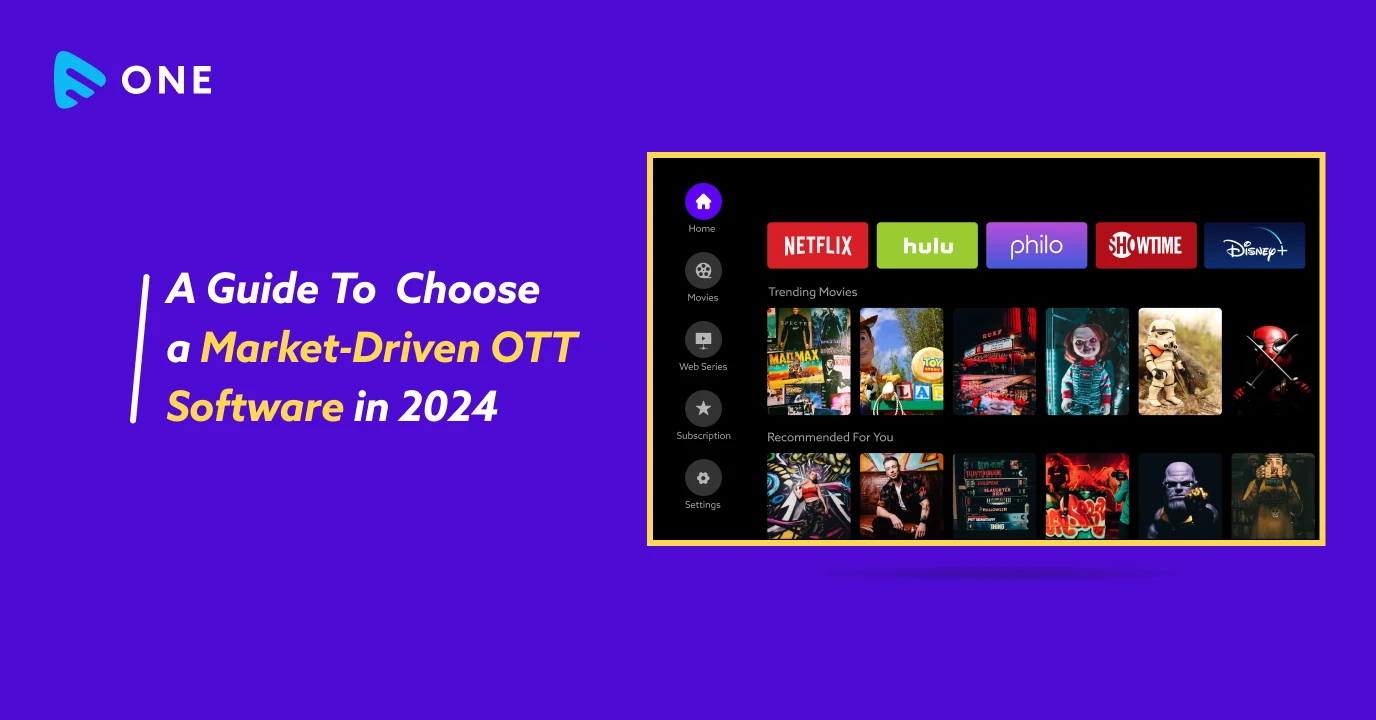



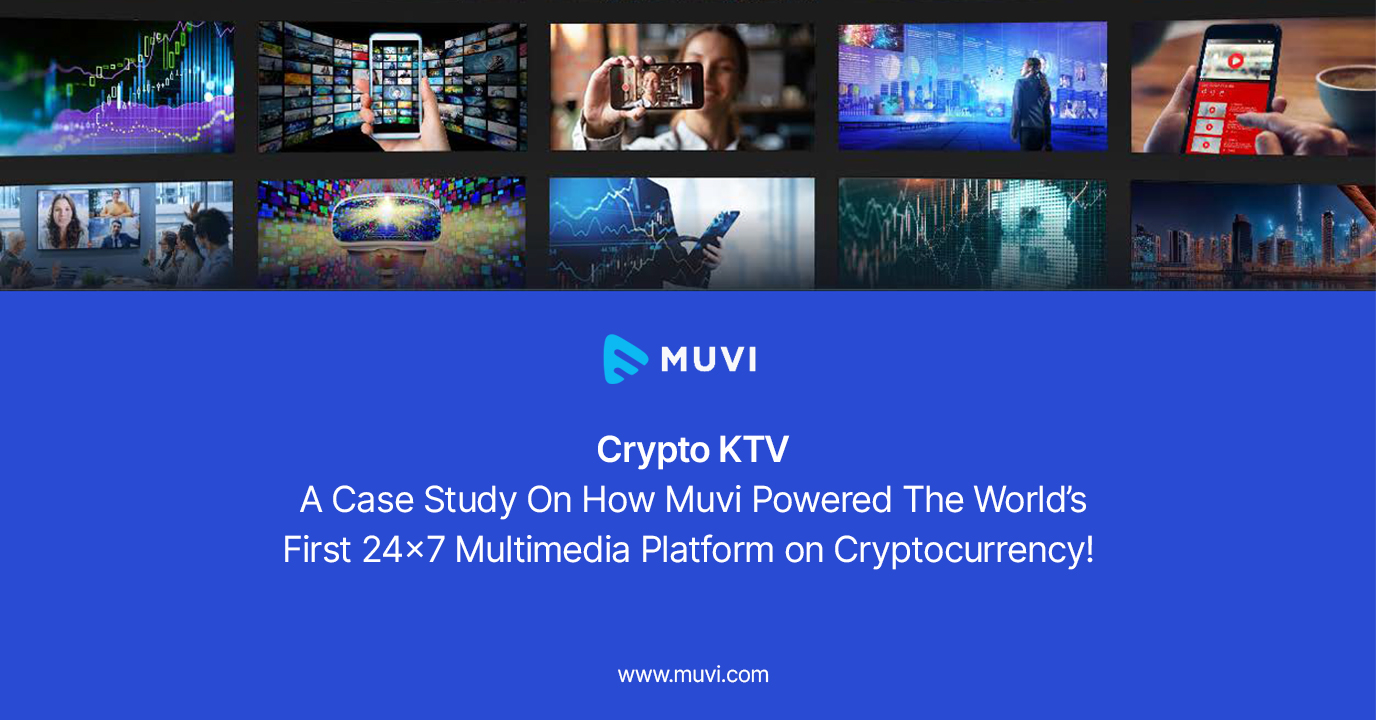
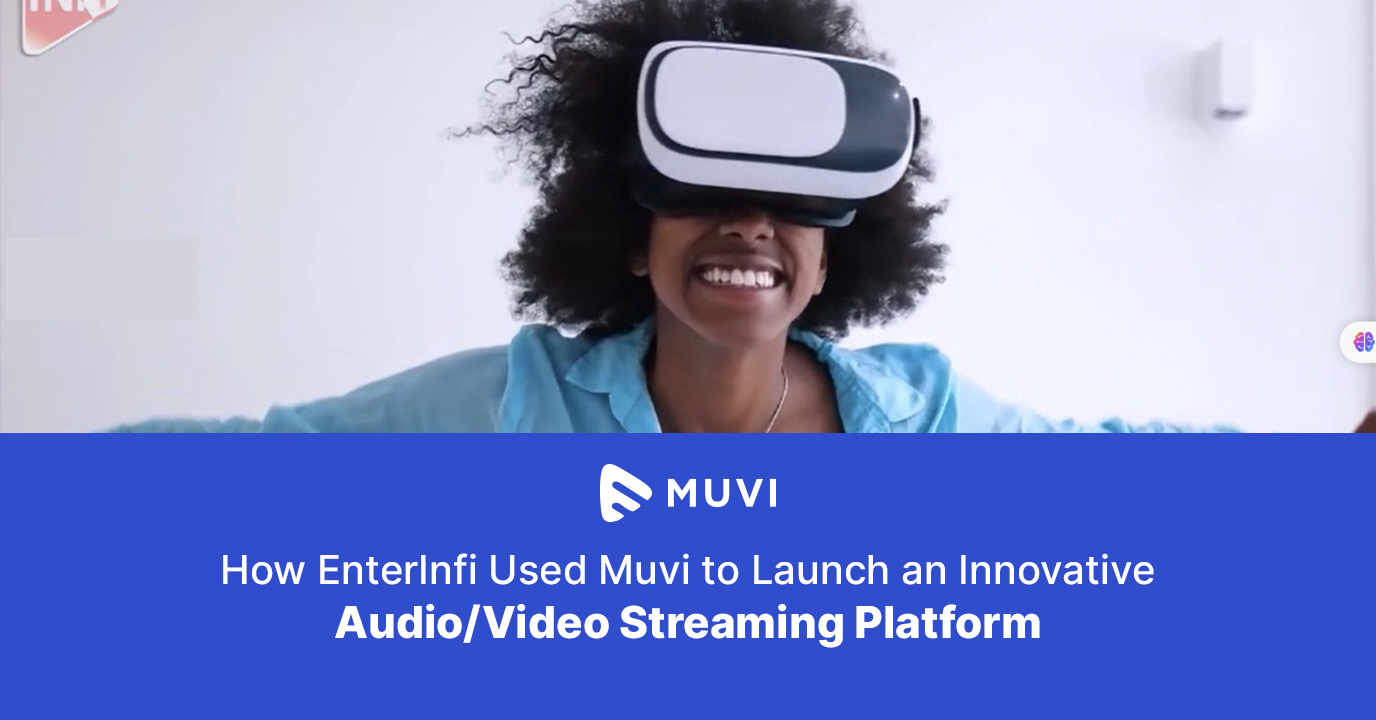
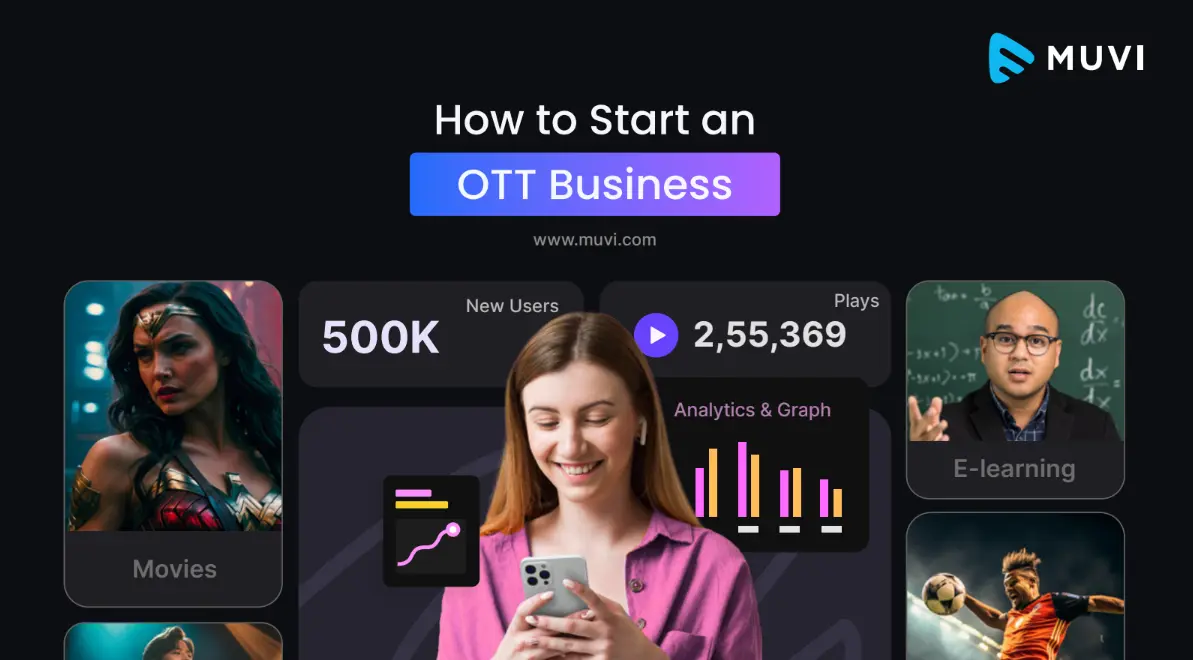
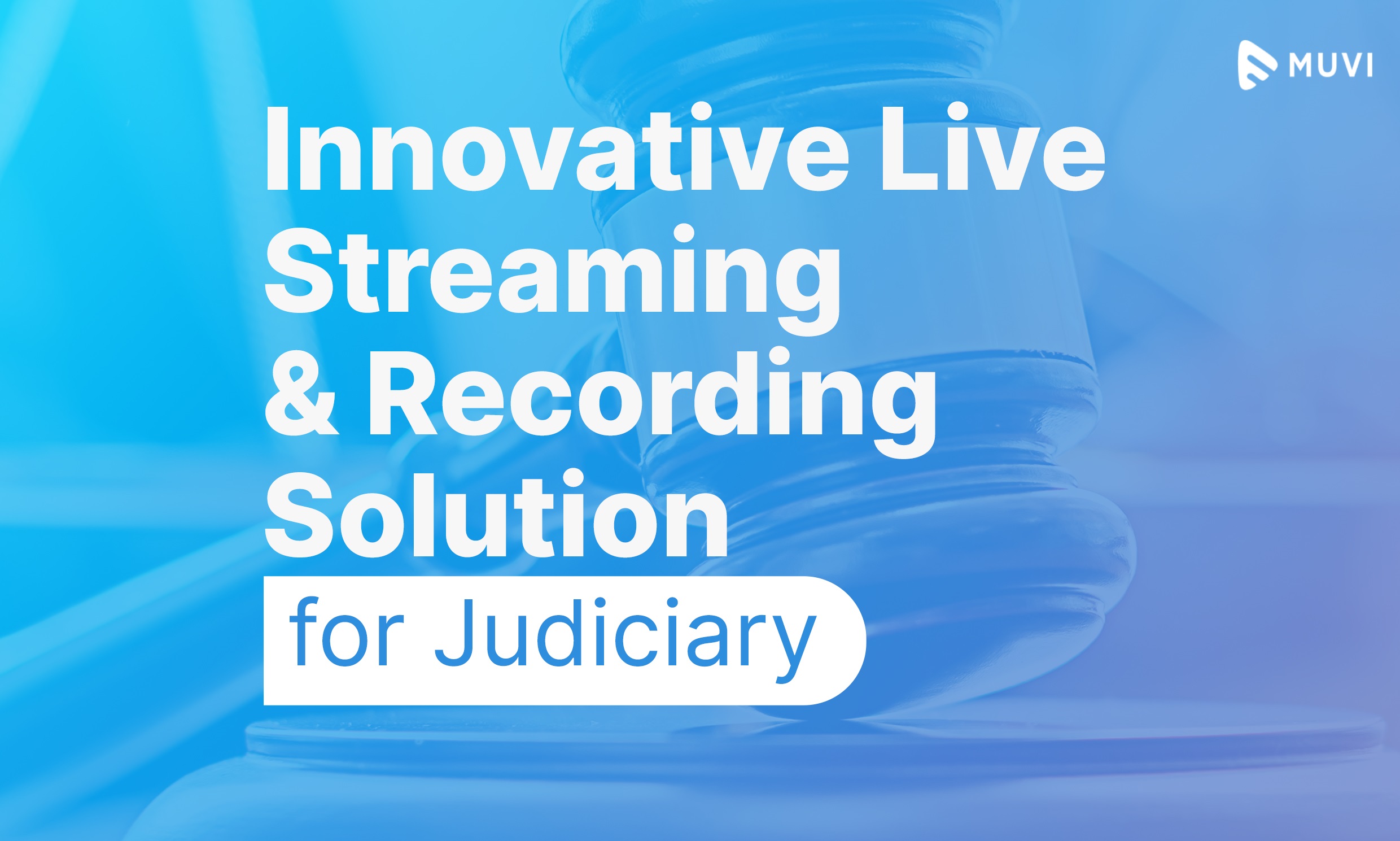
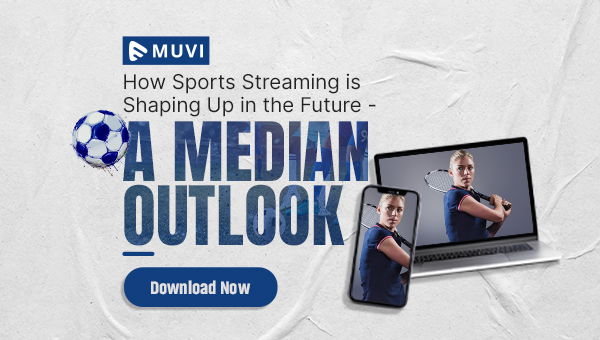
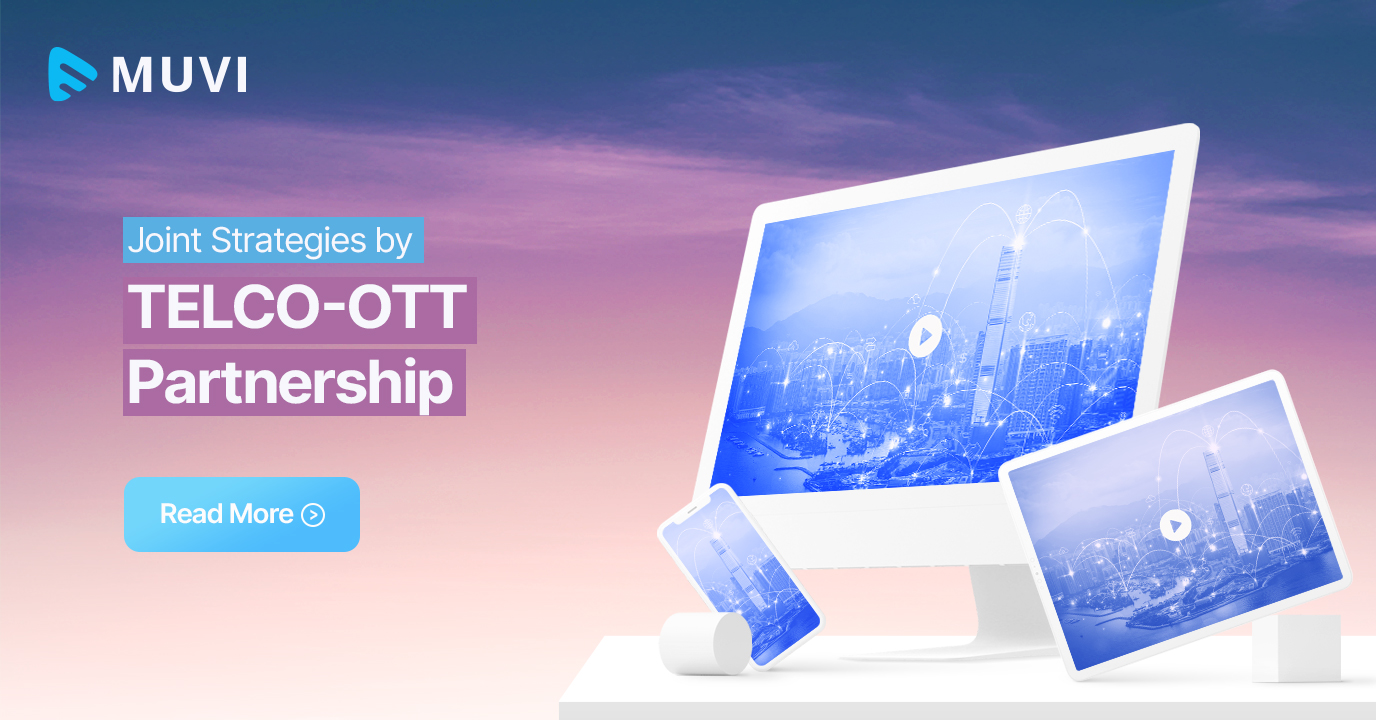
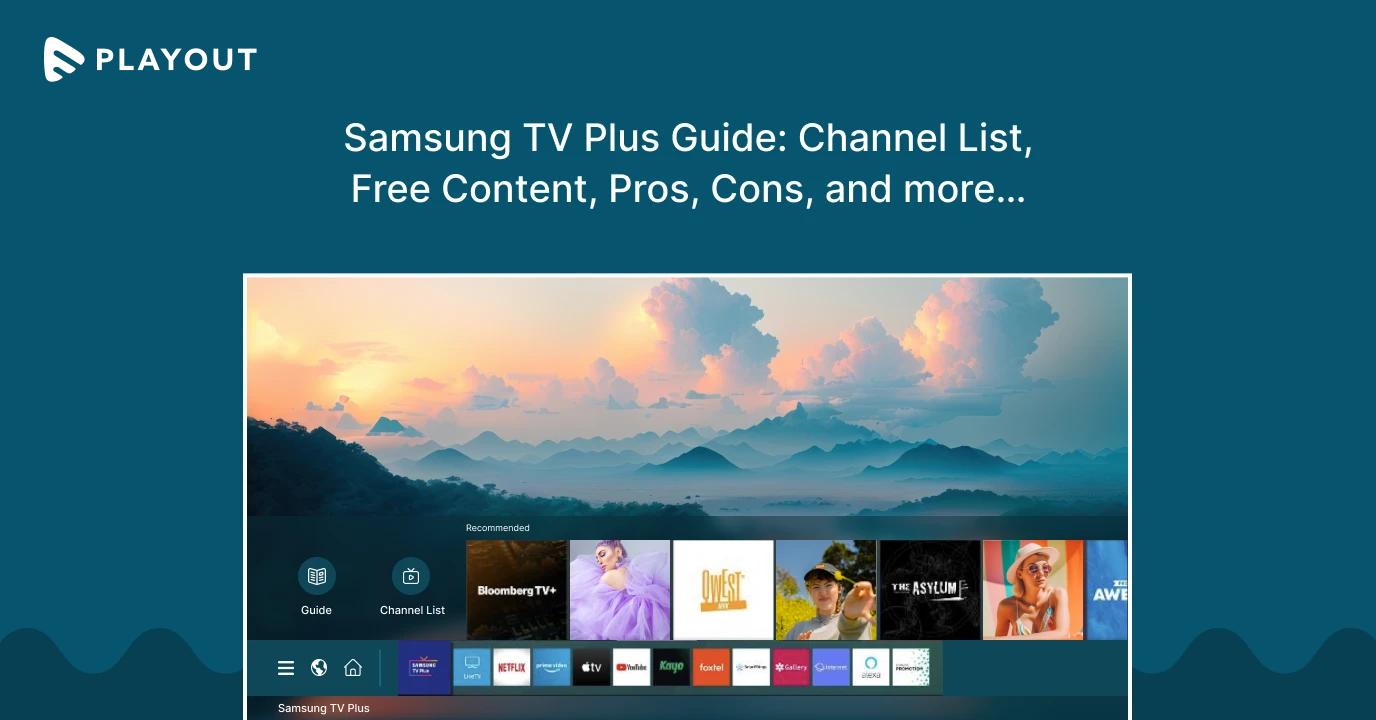
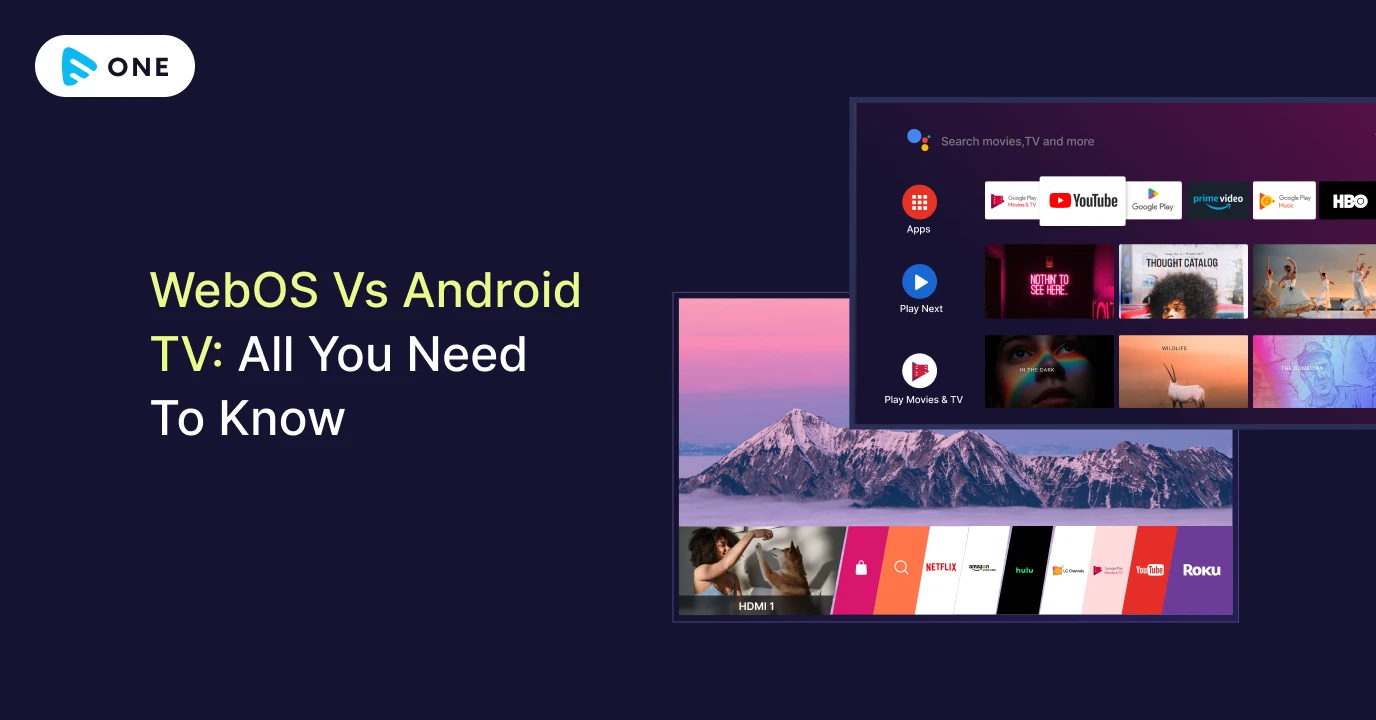




Add your comment